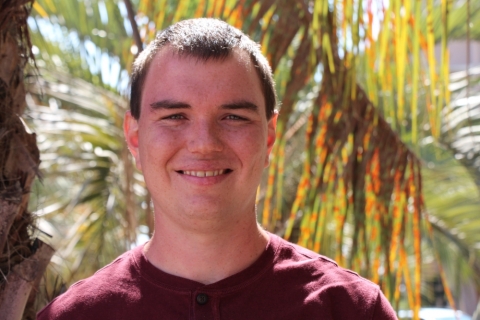
Date:
Location:
Speaker:
Title: Understanding and correlating heteroatom distributions in zeolite frameworks with catalytic activity
Abstract
Zeolites are a class of crystalline, nanoporous aluminosilicates used for many applications, including water softening, gas separations, hydrocarbon conversions, and a wide range of other reaction chemistries. The diverse applications of zeolites arise from local negative charges introduced by four-coordinate aluminum heteroatoms in the zeolite framework, which are charge-balanced by exchangeable cations in the zeolite pores. Exchanging in different cations enables the many different industrial applications of zeolites. Thus, understanding and controlling the complicated distributions of aluminum heteroatoms in the zeolite framework enables the catalytic reaction properties to be modified and improved through manipulation of cation locations and distributions. However, characterization of such distributions and their direct influences on catalysis is challenging. In this talk, I will demonstrate how advanced characterization techniques provide unprecedented insights on aluminum and adsorbed reactant distributions in zeolites.
Local aluminum configurations in zeolite nanopores are hypothesized to affect the catalytic performance of the small-pore zeolite chabazite, which is used in its copper-exchanged form industrially as a deNOx catalyst in diesel exhaust systems. To meet anticipated EPA regulations and to avoid the use of expensive precious-metal catalysts, the low-temperature performance during engine startup and late-catalyst-lifetime stability of current commercial Cu-chabazite catalysts must be improved. For both metrics, it has been proposed that closely paired aluminum configurations (separated by 1-2 bridging Si-O-Si) are desirable. However, the non-stoichiometric and non-periodic ordering of aluminum in the zeolite framework makes characterizing these aluminum pairing distributions in zeolites intractable by many characterization techniques. By using advanced solid-state nuclear magnetic resonance spectroscopy (NMR) analyses, two industrially relevant chabazite catalysts are shown to have different relative amounts of paired-framework aluminum atoms that are not detected by conventional methods.
Cu-chabazite suffers from deactivation under high temperature (> 750 oC) hydrothermal conditions due to a combination of single-atom Cu cations sintering into large particles and dealumination of the zeolite framework. While these deactivation pathways are well-characterized, the changes in types and distributions of active Cu cation and charge-balancing framework Al species resulting from high-temperature hydrothermal aging are not well understood. Here, we observe unexpected changes in deNOx reaction kinetics in a progressively aged Cu-chabazite catalyst. A combination of electron microscopy, electron diffraction, and solid-state NMR are used to understand differences in distributions of copper, aluminum, and adsorbed species after progressive aging treatments. In addition, advanced 2D solid-state exchange NMR analyses reveal differences in distributions of adsorbed species between the fresh and aged catalysts that provide insight into the atomic-level origins of differences in deNOx reaction kinetics between the fresh and aged Cu-chabazite catalysts. These studies provide insights that will aid in the design of next generation deNOx catalysts with improved performance.



